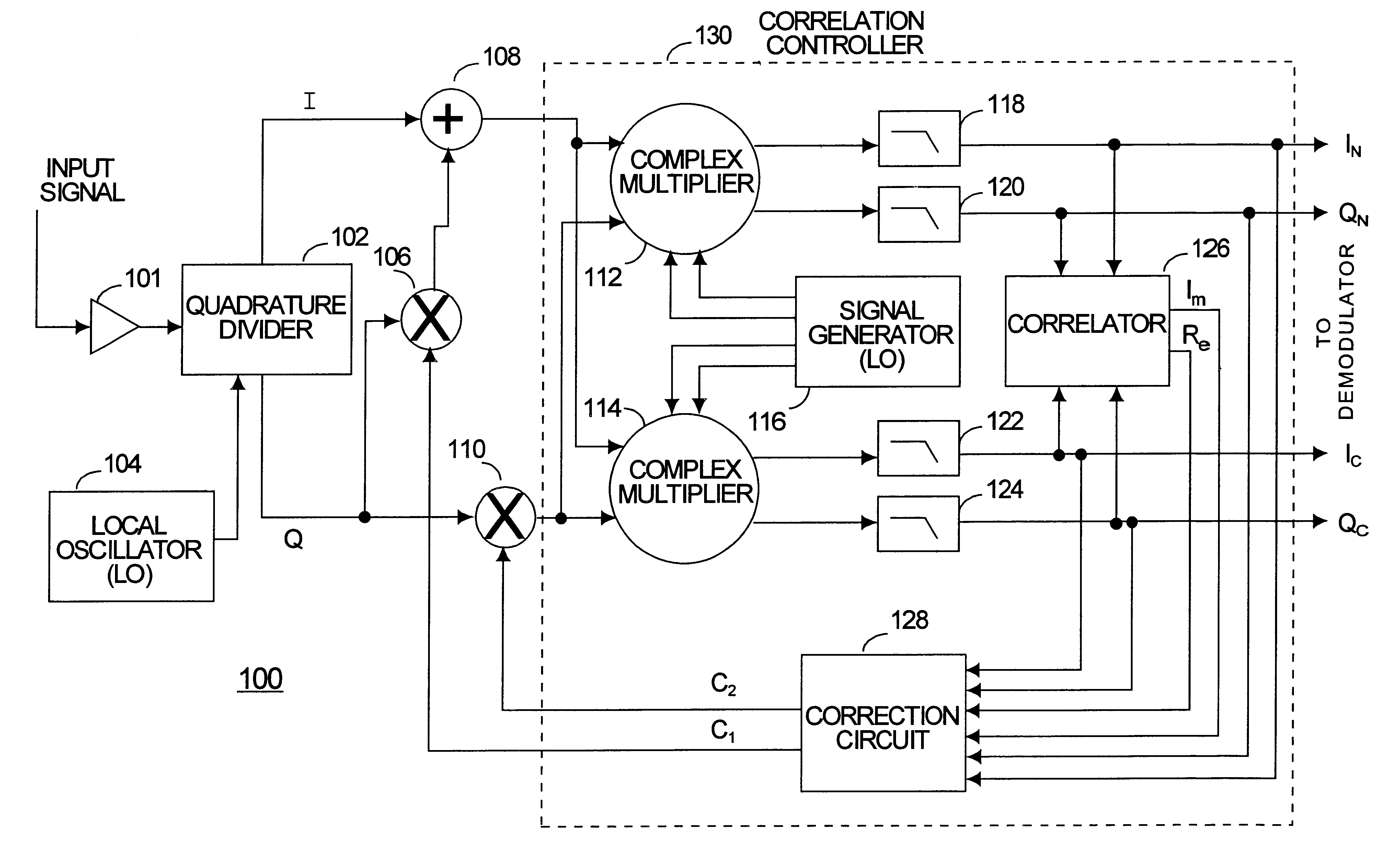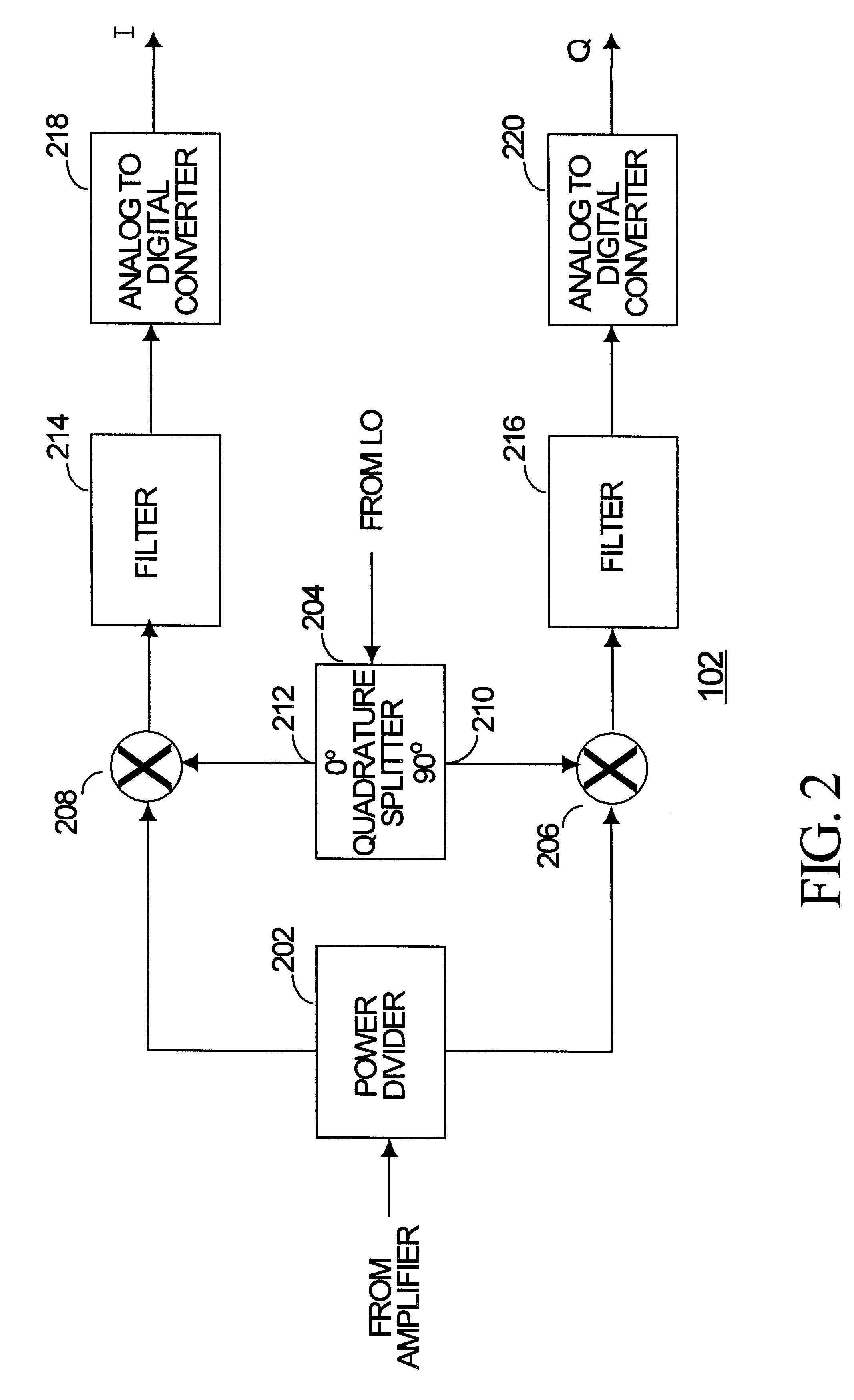Apparatus and method for improving dynamic range in a receiver
a receiver and dynamic range technology, applied in the field of communication systems, can solve the problems of limiting the dynamic range of the homodyne receiver, affecting the dynamic range of the receiver,
- Summary
- Abstract
- Description
- Claims
- Application Information
AI Technical Summary
Problems solved by technology
Method used
Image
Examples
Embodiment Construction
FIG. 1 is a block diagram of a low IF receiver 100 in accordance with a preferred embodiment of the present invention. Although in the preferred embodiment, the receiver 100 is part of a wireless radio frequency communications system, the present invention may be used in a variety of wireless and wired communication systems such as satellite, cellular telephone, cordless telephone, cable telephony, radar, microwave, infrared, and optical communication systems.
An incoming input signal at a carrier frequency (fc) is received at the receiver 100, preferably, through an antenna. An amplifier 101 amplifies the input signal to maximize the SNR during processing. The input signal is divided into two signals (two channels) and frequency shifted to an intermediate frequency (IF) in the quadrature divider 102. A local oscillator 104 generates an LO signal at the LO frequency that is mixed with the incoming signal to shift the incoming signal to the IF. Therefore, in the preferred embodiment, ...
PUM
 Login to View More
Login to View More Abstract
Description
Claims
Application Information
 Login to View More
Login to View More - R&D
- Intellectual Property
- Life Sciences
- Materials
- Tech Scout
- Unparalleled Data Quality
- Higher Quality Content
- 60% Fewer Hallucinations
Browse by: Latest US Patents, China's latest patents, Technical Efficacy Thesaurus, Application Domain, Technology Topic, Popular Technical Reports.
© 2025 PatSnap. All rights reserved.Legal|Privacy policy|Modern Slavery Act Transparency Statement|Sitemap|About US| Contact US: help@patsnap.com



